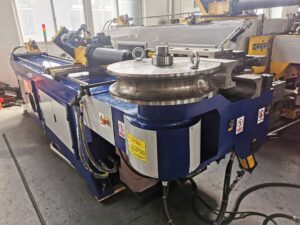How to Bend a Pipe with a Pipe Bender
Bending pipes is a crucial skill in various industries, including plumbing, HVAC, and construction. Whether you’re a professional or a DIY enthusiast, knowing how to bend a pipe with a pipe bender can save you time, money, and ensure that your projects are completed to a high standard.

Understanding Pipe Benders
What is a Pipe Bender?
It’s essential for creating bends in pipes that are used in various applications, such as plumbing, HVAC systems, and structural supports. Pipe benders come in different types, including manual, hydraulic, and electric, each suited for specific pipe materials and sizes.
Types of Pipe Benders
- Manual Pipe Benders: These are the simplest and most affordable type of pipe benders. They are typically used for small to medium-sized pipes and require manual effort to bend the pipe.
- Hydraulic Pipe Benders: These are more powerful and can handle larger pipes. They use hydraulic pressure to bend the pipe, making them suitable for industrial applications.
- Electric Pipe Benders: These are the most advanced type of pipe benders. They use electric motors to bend the pipe, offering precision and ease of use.
Preparing for Pipe Bending
Choosing the Right Pipe Bender
Before you start bending pipes, it’s crucial to choose the right pipe bender for your project. Consider the following factors:
- Pipe Material: Different materials require different bending techniques. For example, copper pipes require a different approach than steel pipes.
- Pipe Size: Ensure that the pipe bender you choose can handle the size of the pipe you’re working with.
- Bend Radius: The bend radius is the radius of the curve you want to create. Some pipe benders are designed for specific bend radii.
Safety Precautions
Safety should always be your top priority when bending pipes. Here are some safety precautions to keep in mind:
- Wear Protective Gear: Always wear safety glasses, gloves, and a mask to protect yourself from debris and sharp edges.
- Secure the Pipe: Ensure that the pipe is securely clamped in the pipe bender to prevent it from slipping during the bending process.
- Check for Obstacles: Make sure there are no obstacles in the bending area that could interfere with the process or cause injury.




